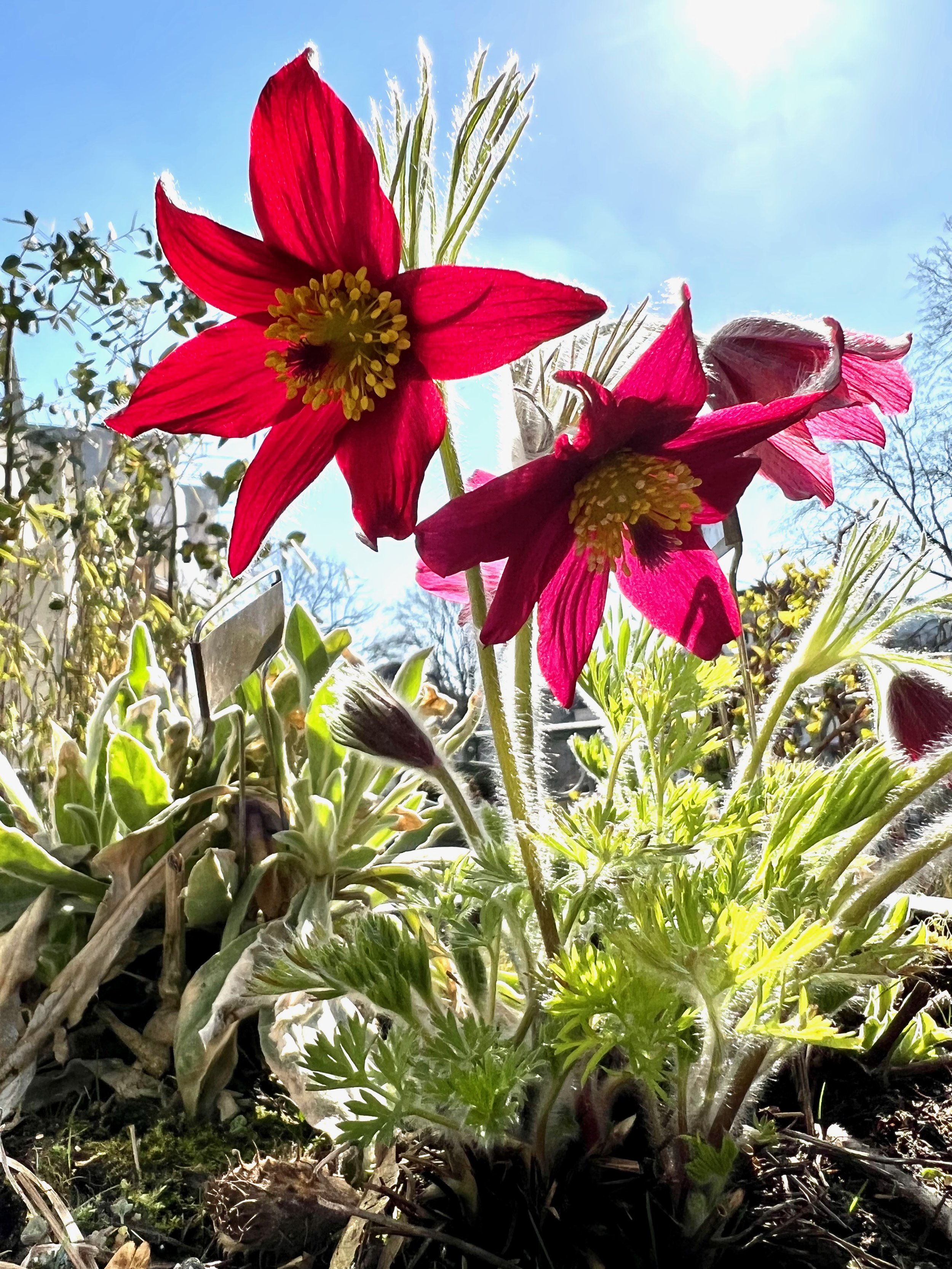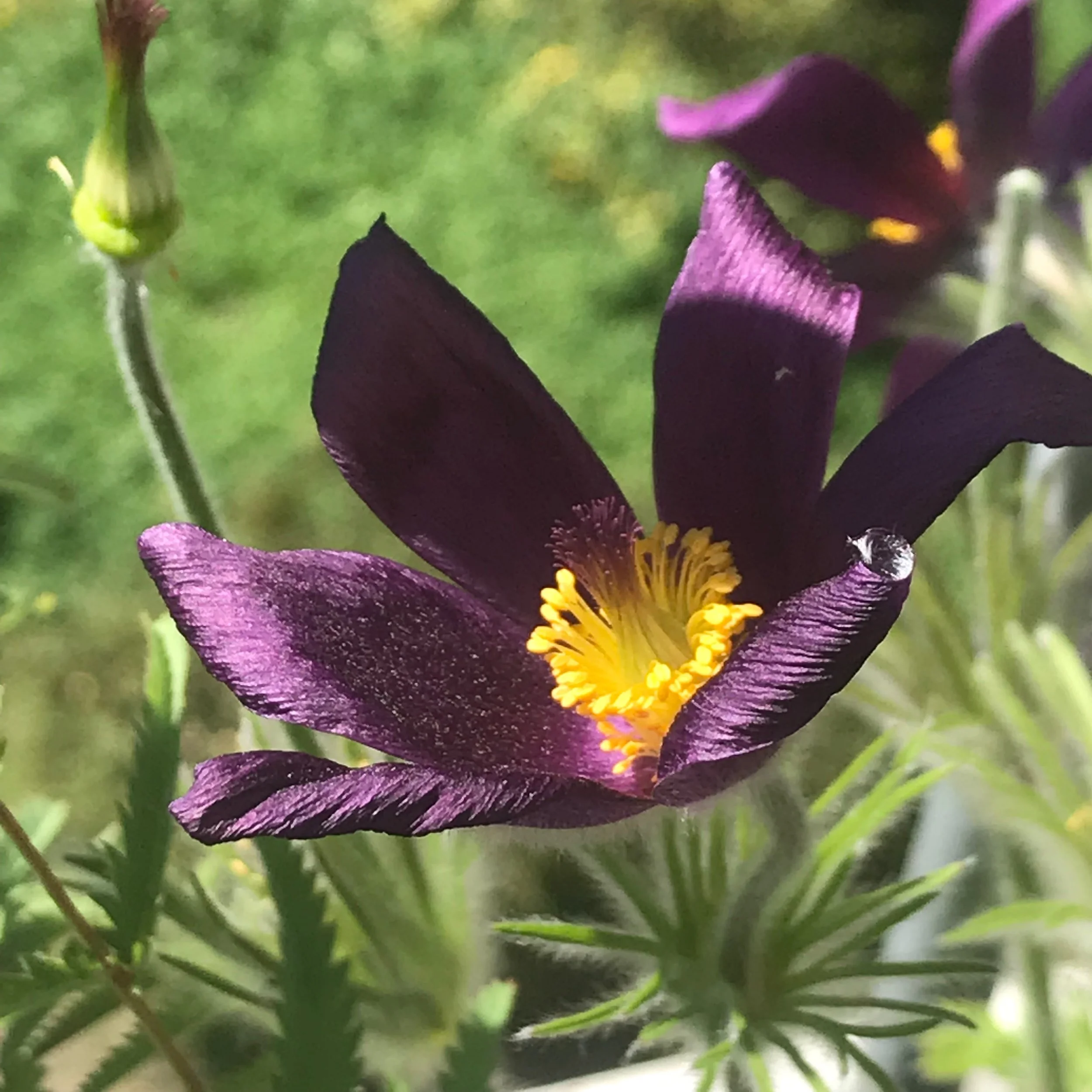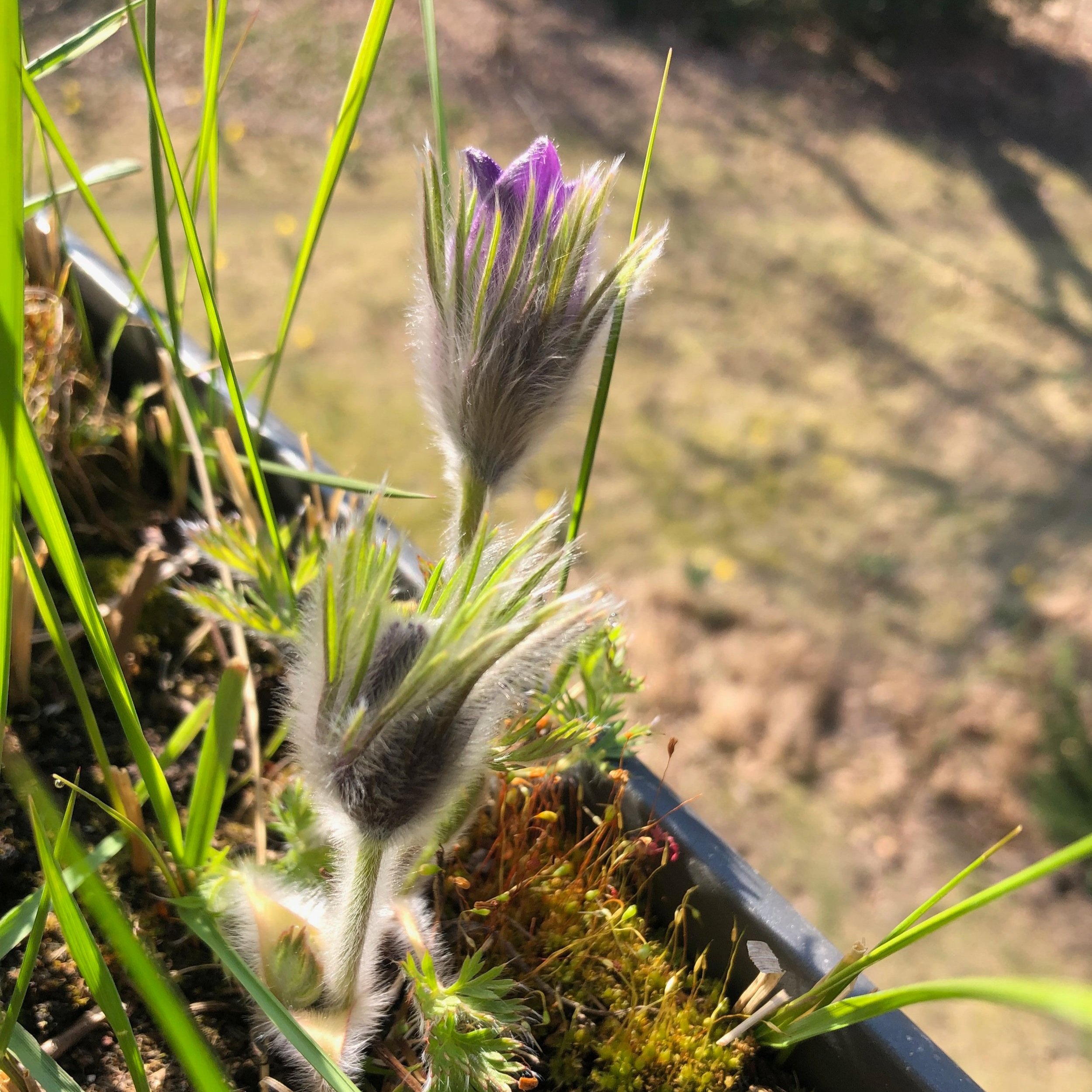Pulsatilla – Pasque Flower
A Loyal Furry Garden (or balcony) Resident


Common names for Pulsatilla are Pasque Flower, Alpine Anemone and Spring Anemone. The German common name is Kitchen Bell or Cow Bell, don't ask me why…
The Pulsatilla flower is one of the early herbaceous perennials to bloom in spring and reminds you wintertime with its shades of grey and brown is not endless – all the colours of nature are having their yearly comeback.
Their appearance has such an uplifting effect (at least on me) that I classify them in the group of anti-depressant pants, at least in what light winter depression is concerned.






The furry plant is covered with silvery hairs, which give her this soft look and make you want to caress her and say thank you for showing up so early in the year. The colour of the species varies from shades of purple with more or less red components to even plain white flowers.
I find them remarkably persistent and loyal, my definition of hardy. They come back year after year. And every year it’s a big joy to see their little furry tips making their way from the barren soil. By the time of spring, I always forgot I had planted them – the joy of a forgetful gardener.
The plants remain attractive through the summer, although the leaves may get a bit tatty and die back in late summer. Fertilized flowers produce ornamental spherical seedheads. It keeps the fluffy silky style of the plant. Those magical seedheads remain on the plant for several weeks and also make a great impression in a flower bouquet.
Most commonly used is the European pasque flower, Pulsatilla vulgaris. While Pulsatilla is often mentioned as ideal for rock gardens, I grow it successfully on the balcony for years. Only on the more shady side, they did not come back after their first year.
So make sure to plant them in a sunny spot for recurring joy starting early in the year!
Growing Region: hardy in zones 4–8
Height: 6 to 12 inches; 15—30 cm
(It is a toxic plant, so don't eat it.)
Pulsatilla on Plants of the World Online (POWO) by the Royal Botanic Gardens, Kew
